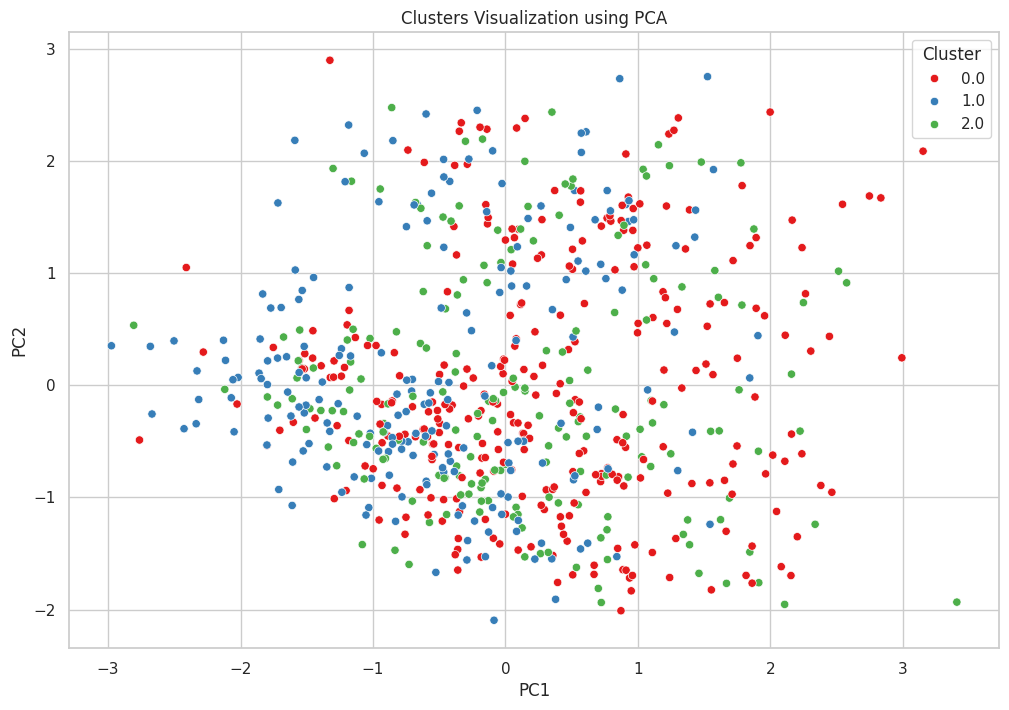Abstract
This study investigates long-term cardiovascular sequelae in COVID-19 survivors using advanced clustering methodologies. By analyzing ECG parameters, demographic information, comorbidities, and hospitalization data, three distinct clusters were identified based on heart rate variability (HRV) and ICU admissions. Cluster 0 exhibited moderate HRV with ICU admissions, Cluster 1 showed lower HRV alongside ICU admissions, and Cluster 2 displayed higher HRV with ICU admissions, all suggesting varying levels of cardiovascular risk. The robustness and stability of the clusters were validated through bootstrapping, confirming the reliability of the model. The findings underscore significant heterogeneity in post-COVID-19 cardiovascular outcomes, highlighting the need for tailored post-recovery care strategies. The clustering model demonstrates potential as a clinical decision support tool for early identification of high-risk patients and optimization of healthcare resources, ultimately improving patient outcomes.
Keywords
COVID-19
cardiovascular complications
clustering analysis
K-means
ECG parameters
Data Availability Statement
Data will be made available on request.
Funding
This work was supported without any funding.
Conflicts of Interest
The authors declare no conflicts of interest.
Ethical Approval and Consent to Participate
Not applicable.
Cite This Article
APA Style
Sadegh-Zadeh, S. A., Mamalo, A. S., Saadat, S., Behnemoon, M., Ojarudi, M., Gharebaghi, N., & Pashaei, M. R. (2025). Clustering Analysis of Long-Term Cardiovascular Complications in COVID-19 Patients. Frontiers in Biomedical Signal Processing, 1(1), 1–23. https://doi.org/10.62762/FBSP.2025.731159
Publisher's Note
IECE stays neutral with regard to jurisdictional claims in published maps and institutional affiliations.
Rights and permissions

Copyright © 2025 by the Author(s). Published by Institute of Emerging and Computer Engineers. This article is an open access article distributed under the terms and conditions of the Creative Commons Attribution (CC BY) license (
https://creativecommons.org/licenses/by/4.0/), which permits use, sharing, adaptation, distribution and reproduction in any medium or format, as long as you give appropriate credit to the original author(s) and the source, provide a link to the Creative Commons licence, and indicate if changes were made.


 Submit Manuscript
Edit a Special Issue
Submit Manuscript
Edit a Special Issue

 Copyright © 2025 by the Author(s). Published by Institute of Emerging and Computer Engineers. This article is an open access article distributed under the terms and conditions of the Creative Commons Attribution (CC BY) license (https://creativecommons.org/licenses/by/4.0/), which permits use, sharing, adaptation, distribution and reproduction in any medium or format, as long as you give appropriate credit to the original author(s) and the source, provide a link to the Creative Commons licence, and indicate if changes were made.
Copyright © 2025 by the Author(s). Published by Institute of Emerging and Computer Engineers. This article is an open access article distributed under the terms and conditions of the Creative Commons Attribution (CC BY) license (https://creativecommons.org/licenses/by/4.0/), which permits use, sharing, adaptation, distribution and reproduction in any medium or format, as long as you give appropriate credit to the original author(s) and the source, provide a link to the Creative Commons licence, and indicate if changes were made. 